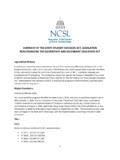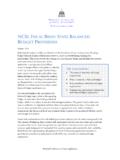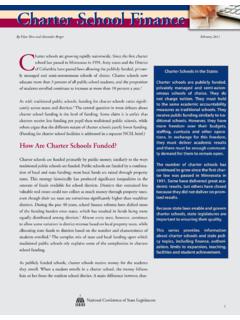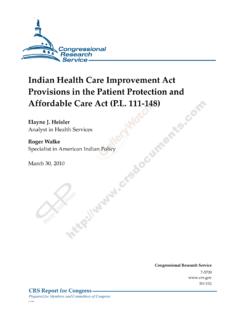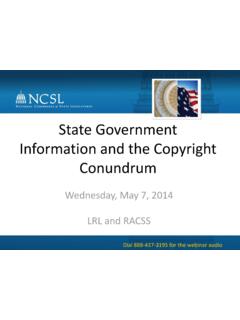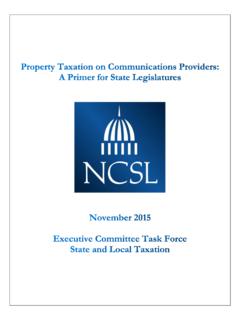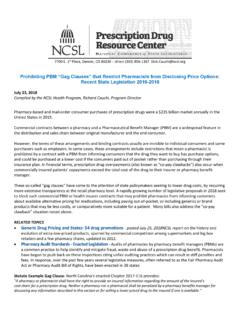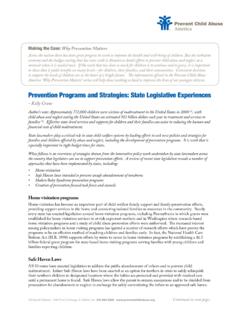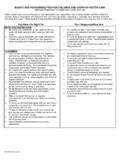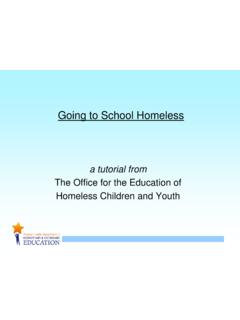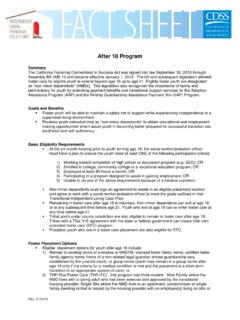Transcription of Mo v i N g Ch i l d r e N ou t o f fo S t e r Ca r e C t f ...
1 Na t i oN a lCo N f e r eN CeofSt a t ele g iS l a t u r eSMo v iN g Ch i l d r eN ou t o f fo s t e r Ca r eth e le g iS l at i v e ro l e i N fi N d iN g Pe rM a N e N t ho M e S f o r Ch i l d r eN By Nina Williams-Mbengue October 2008 Permanency: A Key Concept for Children in Foster Care The word brings to mind thoughts of forever .. safety .. security .. long term and meaningful connections an attachment between a child and a caring adult.
2 (Achieving Permanency for Children: Pioneering Possibilities Amidst Daunting Challenges)1 It means having your side of the church full when you get married. It means having the key to the house. It means having your picture on the wall in someone s house. It is a chance for someone to choose you and for you to choose them. ( youth presenters, compiled by the national Child Welfare Resource Center for youth Development) Child development experts know that in order for a child to grow up as a healthy, functioning and productive member of society, a sense of a permanent home and family is key.
3 Children thrive in an environment that includes an adult who is committed to their long-term well-being: someone whom they can depend on to take them to school, monitor their grades, attend PTA meetings and sporting events and ask about their friends. Children benefit from stable, nurturing family lives, positive school environments and networks of caring friends, relatives and neighbors. This network of support can help a child perform well academically, have positive health and mental health outcomes and make it more likely that they will develop good relationship and social skills that can enable them to become successful , for children who enter the foster care system because of parental abuse, neglect or abandonment, these critical connections and sense of permanency may be lost from the moment a child is removed from home.
4 The removal itself can be devastating and confusing for children of any age. Once in foster care, many children experience prolonged stays. According to 2006 data from the federal Adoption and Foster Care Analysis and Reporting System (AFCARS), of the 289,000 children who exited care during 2006, 51 percent had been in care 12 months or Children also may frequently move from one foster home placement to another. The longer a child is in placement, the higher the chance that he or she will move again. In fiscal year 2002, 73 percent of children in care longer than four years had three or more Frequent moves may result in children losing contact with siblings, other family members, friends and adults in their community who may have been involved in their lives, such as neighbors, coaches, religious leaders and others.
5 This further places the children at risk of emotional and behavioral problems and other negative in foster care may be forced to attend different schools each time they move, resulting in the loss of school records, teachers and friends. They also face poor educational outcomes that include lower standardized test scores, poor academic performance and higher rates of grade retention, absenteeism, tardiness, truancy and v i n g Ch i l d r e n ou t o f fo s t e r Ca r e: th e le g i s l at i v e ro l e i n fi n d i n g Pe r M a n e n t ho M e s f o r Ch i l d r e nNational conference of State LegislaturesApproximately 24,000 foster youth age out of care each year, meaning that they have reached age 18 and are no longer under the state s custody.
6 By this time, many of these children bear the scars of physical abuse and emotional trauma from exposure (including prenatally) to alcohol and other drugs; parental abuse, neglect and abandonment; violence in their homes and communities; separation from birth families; and frequent changes in foster care placement. These experiences place children at great risk of developing physical, emotional and behavioral problems that can lead to school failure, teen pregnancy, homelessness, unemployment and ,8 However, funding from the federal John H.
7 Chaffee Foster Care Independence Program allows states to offer more services to young people who age out of care, including Medicaid coverage for youth up to age 21, education and training vouchers, tuition waivers and housing assistance to aid their journey into adulthood. Even for children who realize the permanency goal of adoption, a number of studies show that 10 to 25 percent of pre-adoptive placements disrupt before adoption proceedings are (Study findings varied based on the population studied, the duration of the study, and geographic and other factors.)
8 In addition, up to 10 percent of finalized adoptions dissolve, resulting in the child s return to foster Factors correlated with disruptions include the number of placements the child experiences while in foster care, the behavioral and emotional needs of the child and agency staff turnover. Paths to PermanencyCreating and fostering safe, permanent, long-term connections between a child and a caring adult has become a major goal of our nation s child welfare system, which is home to approximately 500,000 foster children on any given The following are the main paths to permanency that state child welfare agencies offer children and their families: Reunification; Permanent placement with relatives; Adoption; Child and Family Services Reviews at a Glance Congressionally authorized review of state child welfare systems.
9 The first round of on-site reviews was conducted from 2000 to 2004, and the second round runs from 2007 2010; administered by the Central and Regional Offices of the Children s Bureau, Department of Health and Human Services. states conduct their own Statewide Assessment with support from the federal government and submit it to the Children s Bureau 60 days before the on-site review. Federal and state teams conduct an on-site review of three sites in the state. The teams examine outcomes for a sample of children and families served by the state child welfare agency, including interviewing both the children and families engaged in services and the community stakeholders, such as the courts and community agencies, foster families and caseworkers.
10 states prepare a Program Improvement Plan to develop or enhance policies, training and practices identified as needing improvement. Federal funds are withheld if a state does not successfully complete its Program Improvement Plan. Child Welfare Outcomes Assessed by the Reviews Safety: Children are protected from abuse and neglect and are safely maintained in their homes whenever possible and appropriate. Permanency: Children have permanency and stability in their living situations and continuity in their family relationships and connections. Child and family well-being: Families are better able to provide for their children s needs, and children are provided services that meet their educational, physical health and mental health Performance Is Assessed Through the Reviews Statewide safety and permanency data indicators are compared with national standards.
